![]()
![]()
Which of the following are consequences of light's traveling at different speeds in different media?
A) mirages.
B) rainbows.
C) internal reflection.
D) all of these.
E) none of these.
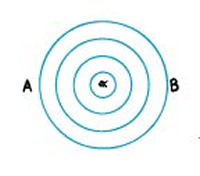
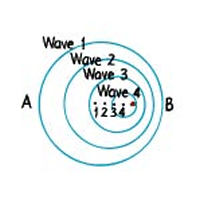
What does that "electromagnetic wave" look like again?
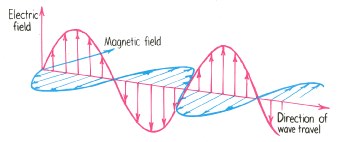
![]()
Light tells us about temperature
Waves refract, so does light. Waves bend when passing through glass, water, any material where it changes speed (more about that, later). White light is all colors of light combined. We can see this using a prism, as each individual color of light bends a little differently when passing through it.
The device below is set up to record the intensity of different colors of light by pivoting the prism so each color is recorded on the intensity meter. It's interesting to note that a graph of the intensity vs. "color" of light tells us about the temperature of the light source. This is how we know the temperature of the surface of the Sun when no one has been there.
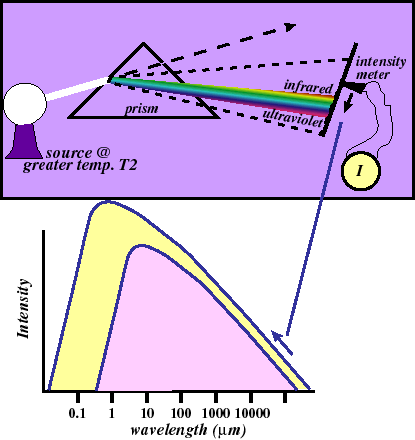
The pitch of a sound is described by its frequency. What corresponds to the "pitch" of light?
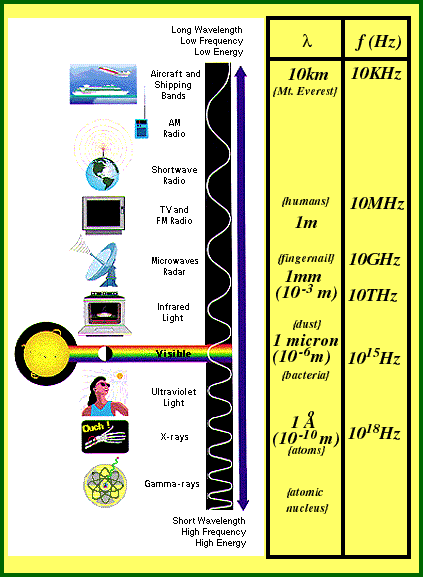
![]()
How do we make light (electromagnetic) waves? How can we "receive" them?
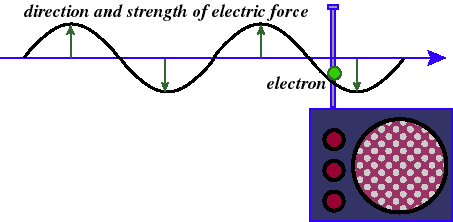
![]()
How do electromagnetic (light) waves pass through transparent materials?
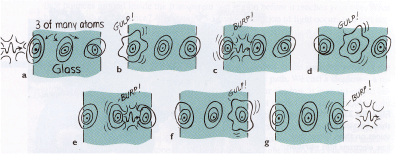
It's simple! Light is "eaten" by atoms (by shifting the orbiting electrons outward), then burped back up (the electrons move back to their original place).
The time needed to "digest" light waves is important. If its too long, the energy is absorbed by the surroundings (as heat) and the light is not re-emitted. This is called absorption. Glass absorbs certain colors of light (ultra-violet {uv} and infrared {ir}) because light "digestion" takes too long.
If digestion is short, the light is re-emitted and (possibly) absorbed by a neighboring atom. This slows down the propagation of light through tranparent materials such as glass.
![]()
Demonstration:
1. Charge an electroscope with a plastic rod rubbed on cat fur (leaves excess electrons on the rod and, hence the electroscope). The leaves of the e-scope repel one another. As the excess electrons are trapped on the electroscope, the leaves remain repelled from one another.
2. Shine mid-ultraviolet (UV) light on the knob of the electroscope (be certain it is clean, rub it with steel wool before trying this experiment). What happens? Why?
3. Ask students to explain what is happening in terms of light (from the UV lamp) carrying energy as a wave.
4. Try recharging the electroscope and discharging it with bright white light. Try discharging it (instead) with laser pointer light. What happens (or doesn’t happen?)?
Light is a special kind of wave called an electromagnetic wave. X-rays, UV light and radio waves are three other kinds of electromagnetic waves.
What are electromagnetic waves?
We may ask several questions to better understand these "EM waves:"
- What restoring forces are involved? (remember, air pressure causes the restoring force for sound waves.)
- Do we need some media to support EM waves?
- How do we make EM waves?
- What do EM waves "look" like? (are they transverse?, longitudinal?)
- How do we know light is waves?
- How does light also act like particles?